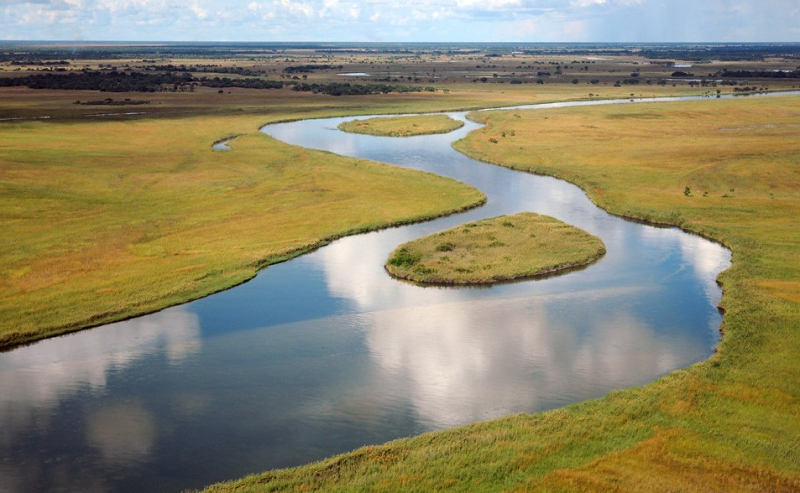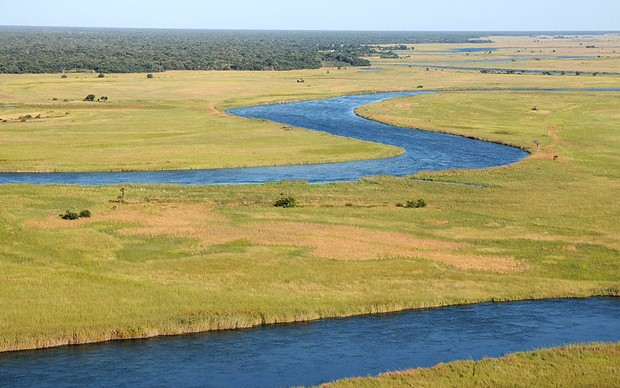Lungwebungu River

The Lungwebungu River (Lungué Bungo in Angola) is the largest tributary of the upper Zambezi River in south-west-central Africa. The Lungwebungu has its headwaters in central Angola at an elevation of around 1,400 meters (4,600 feet), and it flows south-east across the southern African plateau. Within 50 kilometers (31 miles), it has developed the character that it retains for the majority of its course, of extremely intricate meanders, with multiple channels and oxbow lakes, in a swampy channel about 800 m (2,600 ft) wide, which is in turn in a shallow valley with a floodplain 3 to 5 km (1.9 to 3.1 mi) wide, inundated during the rainy season. The floodplain's edges are a white sandy soil covered in a thin forest. The main river channel widens from 50 m (160 ft) to 200 m (660 ft) near the Zambezi, and its floodplain suddenly broadens as it merges with the Zambezi, forming the Barotse Floodplain, which is 25 km (16 mi) wide at that point.
While the river is a valuable resource for people who live nearby as a source of fish, its meanders make it unsuitable for water transport except during the rainy season, when canoes and small boats can ride the flood.
Length: 644 km (400 mi- shared with Zambia)











